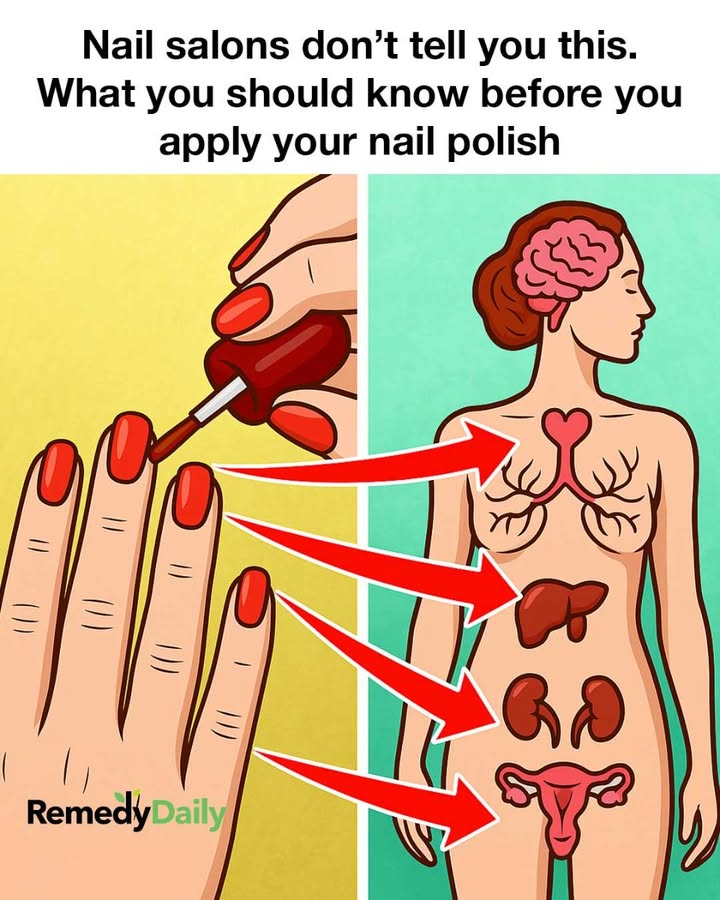Nail polish is more than just a beauty accessory—it’s a form of self-expression. But achieving a flawless manicure at home takes more than just steady hands. Whether you’re new to nail care or a seasoned pro, understanding the right application methods, safe product choices, and maintenance tips can make all the difference in getting a salon-quality finish that lasts.

Let’s dive into the essentials, starting with what’s actually in that colorful bottle of polish you’re swiping onto your nails.
What’s Inside Nail Polish?
Nail polish is a mix of chemicals designed to give you that perfect finish. While many ingredients are harmless in small amounts, others raise concerns for your health or the environment—especially with regular use.
Key Ingredients and Their Roles:
1. Film-Forming Agents
These create the hardened, glossy layer after your polish dries.
-
Example: Nitrocellulose
-
Why it matters: It gives polish structure and shine. Safe when dry, though flammable as a liquid.
2. Resins and Plasticizers
These help the polish stick to your nails and resist cracking.
-
Examples: Tosylamide/formaldehyde resin, camphor, triphenyl phosphate (TPHP)
-
Concerns: Some, like TPHP, may disrupt hormones or irritate sensitive skin.
3. Solvents
These keep polish in liquid form until applied, then evaporate as it dries.
-
Examples: Ethyl acetate, butyl acetate, isopropyl alcohol
-
Note: Use in a well-ventilated space to avoid irritation.
4. Colorants and Pigments
These add that stunning shade or shimmering effect.
-
Examples: Iron oxides, titanium dioxide, FD&C dyes
-
Tip: Opt for polishes that use mineral-based pigments for a cleaner formula.
5. UV Stabilizers
These prevent your polish from fading or turning yellow in the sun.
-
Example: Benzophenone-1
-
Watch out: Possible hormone disruptor—moderate use is best.
Ingredients to Avoid
Unfortunately, many traditional polishes contain chemicals with potential health risks. These include:
-
Formaldehyde – Linked to cancer.
-
Toluene – Can cause dizziness and headaches.
-
DBP (Dibutyl Phthalate) – Associated with reproductive harm.
-
Formaldehyde Resin – Known to trigger allergic reactions.
-
Camphor – Can cause nausea in high doses.
-
TPHP – A hormone-disrupting plasticizer.
-
Parabens, Ethyl Tosylamide, and Xylene – All flagged for toxicity in various regions.
Together, formaldehyde, toluene, and DBP are often called the “Toxic Trio”—chemicals many brands now eliminate.
Safer Options: What Labels Like “5-Free” Mean
Today’s cleaner beauty brands proudly label polishes as:
-
5-Free: No formaldehyde, toluene, DBP, formaldehyde resin, or camphor
-
7-Free: Also excludes ethyl tosylamide and xylene
-
10-Free or 12-Free: Adds removal of parabens, fragrances, phthalates, and sometimes even animal-derived ingredients
Better Alternatives Include:
-
Plasticizers: Acetyl tributyl citrate (instead of DBP or TPHP)
-
Solvents: Stick to ethyl and butyl acetate—but ventilate!
-
Glitter: Choose biodegradable or mineral-based sparkle
-
Preservatives: Phenoxyethanol is a safer swap for parabens
Prep Like a Pro
A smooth, chip-resistant polish job starts with good prep. Here’s how:
-
Remove old polish with a gentle, acetone-free remover.
-
Shape your nails using a file—round, square, or almond—your choice.
-
Soften and push back cuticles after soaking your hands in warm, soapy water.
-
Wash your hands to remove debris, then apply a base coat to prevent staining and promote adhesion.
Picking the Right Polish
Don’t just grab any color off the shelf. Consider your skin tone, the occasion, and the polish’s formula:
-
Neutrals: Great for everyday wear
-
Bold Colors: Perfect for special occasions
-
Finish: Glossy, matte, or shimmer? Each gives a unique vibe
-
Formula: Look for fast-drying, chip-resistant, non-toxic formulas
-
Tip: Read reviews or test samples when possible
Flawless Application in 4 Steps
-
Start with a base coat. It protects nails and helps color grip better.
-
Apply thin layers. Start from the middle of your nail, then sweep to each side.
-
Let each layer dry. Don’t rush. Two coats are usually enough.
-
Seal it in. Use a quality top coat and don’t forget to cap the nail tips to avoid chipping.
Speed Up Dry Time
Short on time? Here’s how to prevent smudges:
-
Use a quick-dry top coat or nail-drying spray
-
Avoid using hands for 30 minutes post-application
-
Dip your nails in cold water to help polish harden
-
Skip heat sources like blow dryers—they can cause bubbles
Make It Last Longer
Keep your manicure fresh with these tips:
-
Apply a new top coat every 2–3 days
-
Wear gloves during chores
-
Moisturize cuticles and hands regularly
-
Avoid soaking your hands in water for extended periods
How to Remove Polish Safely
Skip harsh scrubbing. Instead:
-
Use an acetone-free remover
-
Soak a cotton pad, press it on your nail, and wipe clean
-
Moisturize afterward with cuticle oil or hand cream
Top 5 Nail Polish Risks
-
Toxic Exposure: Stick to non-toxic, clean formulas
-
Brittle Nails: Give your nails a break between applications
-
Stains: Always use a base coat
-
Infections: Avoid damaging the nail bed during removal
-
Pollution: Dispose of polish properly to protect the environment
Final Thoughts
Beautiful nails don’t have to come at the cost of your health. By understanding what goes into your polish and taking the time to prep and maintain your nails properly, you can enjoy vibrant, chip-free nails without worry. Choose cleaner products, apply with care, and take steps to extend your manicure’s life. With the right tools and a little knowledge, you’ll be well on your way to healthy, stunning nails—right from your own home.





